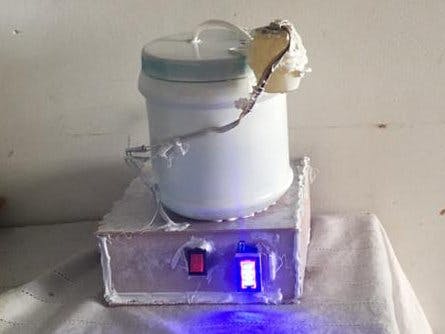"Necessity is the mother of invention"
Our initial point of contact with germs is often from the hands. Unfortunately, not many people wash or maintain the basic hygiene of their hands. Over time people have started emphasising more and more on maintaining personal cleanliness and hygiene. And the best way to keep viruses and bacteria at bay is, of course, by frequent hand washing. Using a sanitiser dispenser for this reduces your chances of getting sick in your inevitable daily interactions with people and germs. Hand sanitiser dispenser also is handy in water-scarce areas.
I was in search of contactless hands sanitiser from various market places and found that the costing is a bit high for ordinary peoples. This product has become a part of our daily life. So I decided to make a few of this device for our loved ones and give them free. And I did well. I have created a rechargeable battery-powered stand-alone smart hand sanitiser dispenser with minimal cost and using reusable components.
So below I will be describing how I have build one and what will be my next goal.
How does an automatic hand sanitiser dispenser work?The infrared sensors of the automatic hand sanitiser dispenser detect the infrared energy that is emitted by one's body heat. When hands are placed in the proximity of the sensor, the infrared energy quickly fluctuates. This fluctuation triggers the pump to activate and dispense the designated amount of sanitiser.
Features :
- 1. Portable and lightweight.
- 2. This will work under the sun also (Indoor and outdoor ).
- 3. 3 days continuous running with a single charge.
- 4. Container capacity is 1.5 litre.
- 5. Battery indicator.
- 6. Controlled flow rate to prevent huge liquid dispenser.
- 7. Easy to build
- 8. overall cost will be 15 -25$
Future Goal:
Adobe model is version1.0. 0. Next upcoming version I will be adding the below features.
- 1. We will use solar power to recharge our batteries.
- 2. Reduce the component cost to 10$.
- 3. Will be designing the custom PCB.
- 4. Increase the battery working capacity but reducing consumption.
- 5. More slick design and robust
Model One :
Model 2: Optimize Flow.
High-level component connectionsMini Submersible DC Motor Pump will be connected with Relay "NO" slot. We need to add a capacitor in parallel with the load so that it doesn't drain so much current.
Mode 2: Schamtic this is the non Arduno module :
PCB Design
Building it




















_3u05Tpwasz.png?auto=compress%2Cformat&w=40&h=40&fit=fillmax&bg=fff&dpr=2)
Comments
Please log in or sign up to comment.